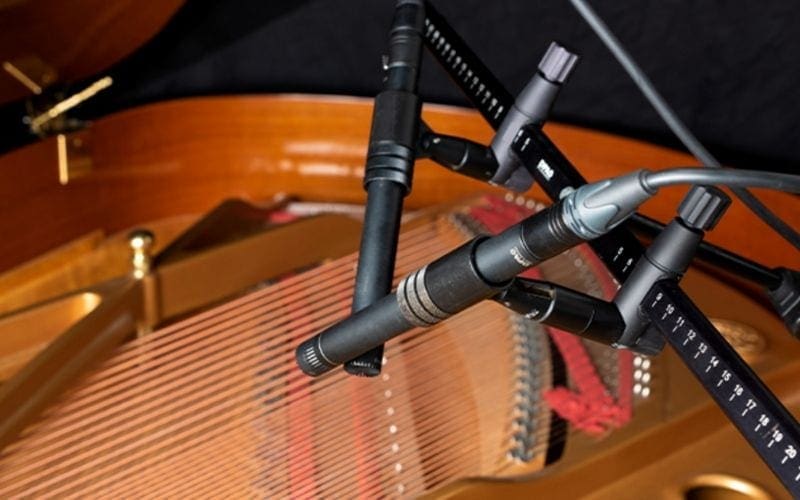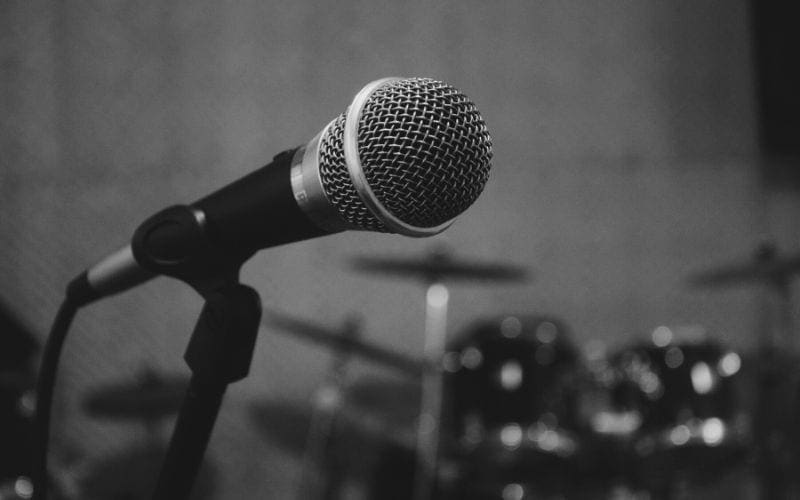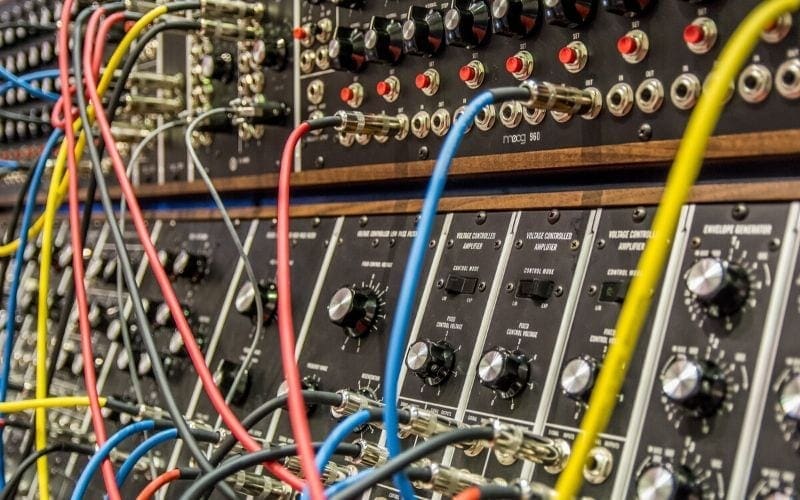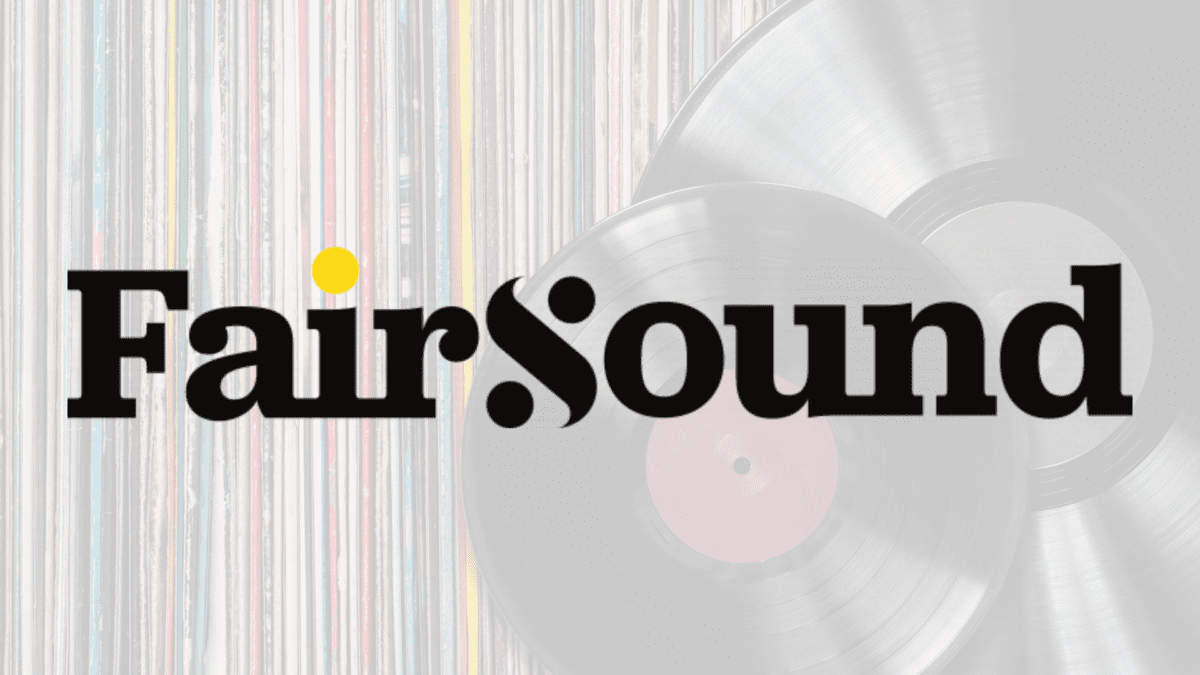Mono vs stereo; both have their place of importance in music production. They are two fundamentals in audio engineering that, as a producer, you’ll be dealing with every day.
To consumers, mono and stereo don’t mean much.
To producers, they’re part of daily decision making. The tasteful application and use of mono and stereo can enhance the aesthetics of your productions.

In this guide, we’ll cover the differences between mono and stereo. You’ll learn about the historical significance of mono and stereo, as well as their use in recording and mixing.
What Is Mono Audio?
Mono is short for monophonic, meaning one sound.
Mono = One
Phonē (Greek) – Phonic (English) = Sound
Mono vs stereo sound: Mono sound is any sound – in most cases, music, that is recorded and or played back using one audio channel. For example, one microphone recording a guitar is a mono recording, because you’re using one channel (with one mic) to pick up the sound of the guitar.
Even if you record multiple instruments, using one microphone, it is still a mono recording because everything is being captured and played back through one channel.
All you need to know about mono is that it is a system of recording and playing back audio through one channel.
It doesn’t matter how many sounds or instruments there are in the recording. If it is all sent through one channel, it is mono.
We’ll get into mono vs stereo recording and specifics later though!
What Is Stereo?
Stereo is short for stereophonic, meaning full sound.
Stereós (Greek) – Stereo (English) = Full
Phonē (Greek) – Phonic (English) = Sound
Stereo vs mono: stereo is sound recorded with two microphones and or played back through two channels.
All our listening systems are configured in stereo; our phones, laptop speakers, mono vs stereo headphones, the sound in films, the sound in video games, the PA systems in clubs and festivals, and so on.
Everything that produces sound in consumer electronics and media has two channels and is therefore configured to stereo.
There two types of stereo you’ll come across.
There is True Stereo and another type, which we call Pseudo Stereo
True stereo is when a sound source like an instrument or dialogue is recorded with two microphones.
Pseudo stereo or, simulated stereo is anything that plays through two channels but isn’t recorded in true stereo. For example, if you record a guitar with one microphone, the guitar will be in mono but played back in stereo, because all audio playback systems play sound through two channels.
We’ll get into all these technicalities in the next section below.
Psychoacoustics: Mono Vs Stereo Sound Perception

There are audio technical differences between mono and stereo, certainly. But there are also psychoacoustic differences – sound perception differences. These differences are what define mono and stereo sound.
The word psychoacoustic is a fancy way of saying: sound perception and is in fact, a field of study in academia. More specifically it is a cross-disciplinary subject involving research in psychology, physics, biology, acoustics, and music to understand our perception of sound.
In short, ‘sound’ is a mechanical and physical phenomenon (see our soundproofing article), but once it reaches our ears, it’s no longer mechanical as it’s processed by our brains and is then linked to our perception of the world – a little over-technical for this article, true, but still relevant.
Anyway, moving on..
Mono, as we know, is sound that is captured or reproduced through one channel. When we listen to music in mono, we perceive the music as it is – in one sonic image. You hear the music in a very shallow and plain 2D form. It can still sound good, of course, but there’s not that much sonic depth and nuance to it.
Perception Of Stereo
Our perception of stereo sound is a lot more exciting. Stereo sound gives us an almost 3D-like sonic image.
As mentioned, stereo sound is split into two channels, and the psychoacoustic effect of this, when we hear the sound reach our ears, is the perception of space.
We can naturally identify the location of a sound source based on our proximity to it because our ears will register the same sound at slightly different timing intervals. For example, if a sound is produced on your left side. The sound will naturally reach your left ear before your right. Along the way, the sound is absorbed by various objects, certain frequencies are lost, and volume is attenuated. Our brains process all of this and the incremental timing (and frequency) differences, give us our perception of the space, environment, and the location of the sound source itself.
Stereo imitates this psychoacoustic phenomenon and we’re given a richer, fuller listening experience.
Put simply, mono sound just reaches our ears all at once giving us a basic, inaccurate (sonically speaking) perception of music, whereas stereo mimics our real-life perception of sound.
A Very Brief History Of Mono To Stereo

In the late 1930s and during the 1940s, music recordings, releases, and technologies like early record players, sound in movies, etc., were all done and configured in mono.
By the 1960s records were mass-produced and released in stereo.
From here, stereo became the standard, carrying on to cassettes, stereo playback systems, and into the modern digital era.
However, stereo, as a concept, was realized in the late 19th century and stereo technology was around during the early 20th century. The reason mono stuck around for so long was that technology companies and radio broadcasters of the time weren’t ready to give up their mono systems.
Alan Blumlein is the man responsible for your listening experience. He developed and patented the stereo recording and production systems we use today! He worked at EMI in the 1930s and his technology was experimented with ‘behind the scenes’ until it eventually became mainstream.
Mono Vs Stereo Recording

Mono vs stereo, how can you begin using your understanding of mono and stereo in your productions?
Well, now you know the difference between mono and stereo; you can make deliberate creative decisions when it comes to recording. You can use your understanding of the psychoacoustic effect stereo sound has on listeners to create immersive recordings, for example.
To illustrate, say you have a talented singer-songwriter you want to record. You could choose to record their guitar with two microphones, creating a true stereo sound. Next, record the vocals with one microphone – creating a mono sound in the recording which can occupy the center of the stereo field. The sonic aesthetic you get is an immersive guitar sound wrapped around a mono recording of the vocals.
Or if you’re an electronic producer, for example, you could create a big synth pad sound by sending the synth signal out of an amplifier and recording it in true stereo by placing two microphones in front of the amplifier.
To create stereo recordings, you’ll need two microphones to record with. In addition, you need to adjust their levels so they’re as close to identical as possible (otherwise you get a tilted stereo sound). You also need to pay attention to the distance between the two microphones.
There are all kinds of stereo recording techniques that have been developed over the years. Modern engineers use all of them frequently, depending on the project.
As a producer, it’s worth learning one or two.
Below are two simple but effective stereo recording techniques that are perfect to get you started recording true stereo.
X/Y Technique

With two cardioid microphones. Cross one over the other at a 90-degree angle, allowing a slight gap between them. And of course, make sure you’re pointing them at the sound source in such a way that what you pick up sounds good!
A/B Technique

Point two omnidirectional microphones towards the sound source. Keep the microphones one foot away from the sound source itself and the microphones two feet apart. Try experimenting with moving the microphones closer to the instrument and/or further apart from one another for different results.
These are two basic techniques to get anyone started recording in stereo.
If you’re confident using the X/Y and A/B techniques, you can try something a little more complicated like the Blumlein pair (named after the inventor of modern stereo), mid-side, or ORTF.
Creating mono recordings is simple. As you know by now, a mono sound is anything that goes through one channel. All you need in this case is one microphone to record with. There’s not much to it.
For any sounds and instruments that play an important role in your productions, you’ll want to record them in mono. Things like bass, kick drums, snare drums, and vocals.
To get the best and most aesthetically pleasing results from mono vs stereo recordings, you need to consider what instruments are appropriate for mono and stereo.
Mono & Stereo Mixing Tips

You can use the psychoacoustics of mono and stereo sound as a tool to enhance your mixes or adjust your mixes.
Below are 5 tips you can apply to your mixing workflow right away!
Faking Stereo
An extremely powerful technique to add to your mixing workflow is creating pseudo stereo tracks to achieve a wider and more interesting stereo image.
This technique takes advantage of our psychoacoustic perception of stereo sound.
By duplicating one of your tracks and delaying it by a few milliseconds, you can create a stereo effect. One of the sounds will reach your ears slightly before the other, creating the impression that the sound has been recorded in stereo.
Let’s use a mono synth track as an example. Say your mono synth sounds great and brings a lot of flavor to your song.
But you have a feeling the synth would sound great if its sound was bigger and wider.
What can you do to achieve this effect?
Simple.
- Duplicate the mono synth, so you have two.
- Pan one hard left and the other hard right.
- Now, take either the left or right and nudge it forward slightly.
That’s it!
Keep in mind this trick only works if you keep the delay under 0.43 milliseconds. If you go over this limit, the stereo effect will break down and sound like two out-of-sync instruments.
This is a very powerful way to enhance your mix.
Listening in Mono
When finalizing your mix, it’s always recommended that you take time to listen to it. This way you can take note of small discrepancies and make final adjustments to ensure your mix is perfect.
An effective listening technique is to listen in mono. If you switch your master output to mono, this will remove your stereo image and throw all the instruments into one big mosaic of sound.
If you listen carefully, you’ll notice certain instruments are drowned out by others as they compete for space in the center of the 2D sonic image. This indicates that you need to tweak the frequency information of the competing instruments.
Once you’ve made these adjustments and switched back to stereo, the instruments will not only go back to their place in the stereo image but will sound clearer, enhancing the overall sound of your mix.
It’s very effective!
Keeping important sounds in mono

Always keep the most important sounds in mono.
Always.
For example, don’t pan your bass left or right, or even slightly left or right. Bass sounds should always stay in the center of your stereo image.
The bass carries the rhythm and harmony in all forms of music. Sonically, the bass also carries the heaviness and substance of a song. And so, you’ll want your bass playing down the center of your track.
The same logic applies to sounds like kick drums and snares. These components of the rhythm section are very important to the groove and flow of your music. Naturally, you’ll want these sounds to remain in the center of your image too.
For lead vocals, it goes without saying. They should always be centered, going down the middle of your stereo image.
Arrange in mono vs stereo
As an added effect to a song arrangement, you could alternate between mono and stereo configurations.
For example, have most of a song configured in stereo (as normal) but flip the configuration to mono in the middle-8 section of the song.
Or, configure song intros and outros to mono and switch to stereo for everything else.
This quite a unique implementation of mono and stereo but it works well!
It’s best to use this arrangement effect tastefully.
Experimenting with plugins

Plugins! They’re so much fun to experiment with and it’s always exciting getting new plugins.
All plugins will give you the option to use them in mono or stereo.
But there are specially designed plugins that can turn mono tracks into stereo and some will enable you to create a wider stereo image, while others use special algorithms that emulate stereo recording techniques.
So, look out for special stereo functionality in plugins to enhance the stereo image of your productions.
As a producer, songwriter or musician, you’ll be confronted with mono and stereo systems daily. But it takes no time at all to get to grips with mono and stereo. So, get comfortable with both concepts and use them to your advantage!
What Now?
If you enjoyed this article please let us know! We love to see you guys sharing our guides and hope it can help more people learn about the music industry. You can find other topics similar to this one and much more on our blog.










